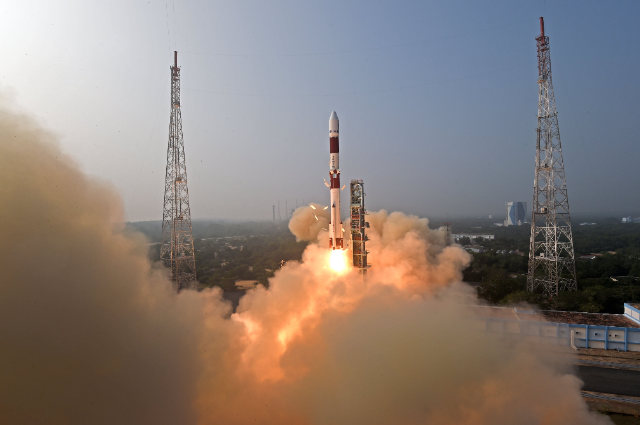Indian Space Research Organisation (ISRO) began the New Year positively as it successfully launched PSLV-C58. The rocket carried XPOSAT, the nation's first dedicated satellite for studying black holes. The PSLV-C58, in its 60th mission, carried the primary payload XPoSat and 10 other satellites destined for deployment in low Earth orbits. The 25-hour countdown began on 31st December, leading to the lift-off scheduled at 9:10 am from the first launch pad at SDSC-SHAR, Sriharikota, located approximately 135 km east of Chennai on 1st January.
The X-ray Polarimeter Satellite (XPoSat) aims to investigate the polarization of intense X-ray sources in space. ISRO highlighted that it is the organization's first dedicated scientific satellite designed to research space-based polarization measurements of X-ray emissions from celestial sources like a black hole.
The PSLV-C58 mission aimed to measure the polarization of X-rays in the energy band 8-30 keV emanating from about 50 potential cosmic sources and to conduct long-term spectral and temporal studies of cosmic X-ray sources. The X-ray polarization serves as a crucial diagnostic tool for examining the radiation mechanism and geometry of celestial sources. The primary payload of XPoSat, POLIX (Polarimeter Instrument in X-Rays), was designed to measure polarimetry parameters by Raman Research Institute, and XSPECT (X-ray Spectroscopy and Timing) was built by the U R Rao Satellite Centre, Bengaluru.
XPOSAT, the country’s first dedicated satellite for studying black holes, is essential for advancing our understanding of fundamental physics, including gravity and the nature of spacetime. Additionally, black holes' impact on surrounding matter and galaxies makes them key players in shaping the evolution of the cosmos. Black holes are celestial objects with intense gravitational forces that nothing, not even light, can escape their grasp, rendering them invisible to direct observation. Formed from the collapse of massive stars, black holes have a boundary called the event horizon, beyond which nothing can return. They come in various sizes, with stellar-mass black holes having several times the mass of the Sun, and supermassive black holes residing at the centers of galaxies, containing millions or billions of solar masses. Despite their mysterious nature, black holes play a crucial role in astrophysics, influencing the dynamics of surrounding matter and providing unique insights into the fabric of spacetime.
Reflecting on 2023, it was a remarkable year for ISRO and the country. The success of the Chandrayaan mission moved India into the elite space club, achieving a soft landing near the moon's South Pole. And now XPoSat marks a monumental achievement, advancing our understanding of cosmic phenomena. This mission drives India into a selected group of nations pioneering groundbreaking research in space-based explorations. As 2024 begins, ISRO is also set on the Gaganyaan launch, marking India's first human spaceflight program as well.
. . .
References:

